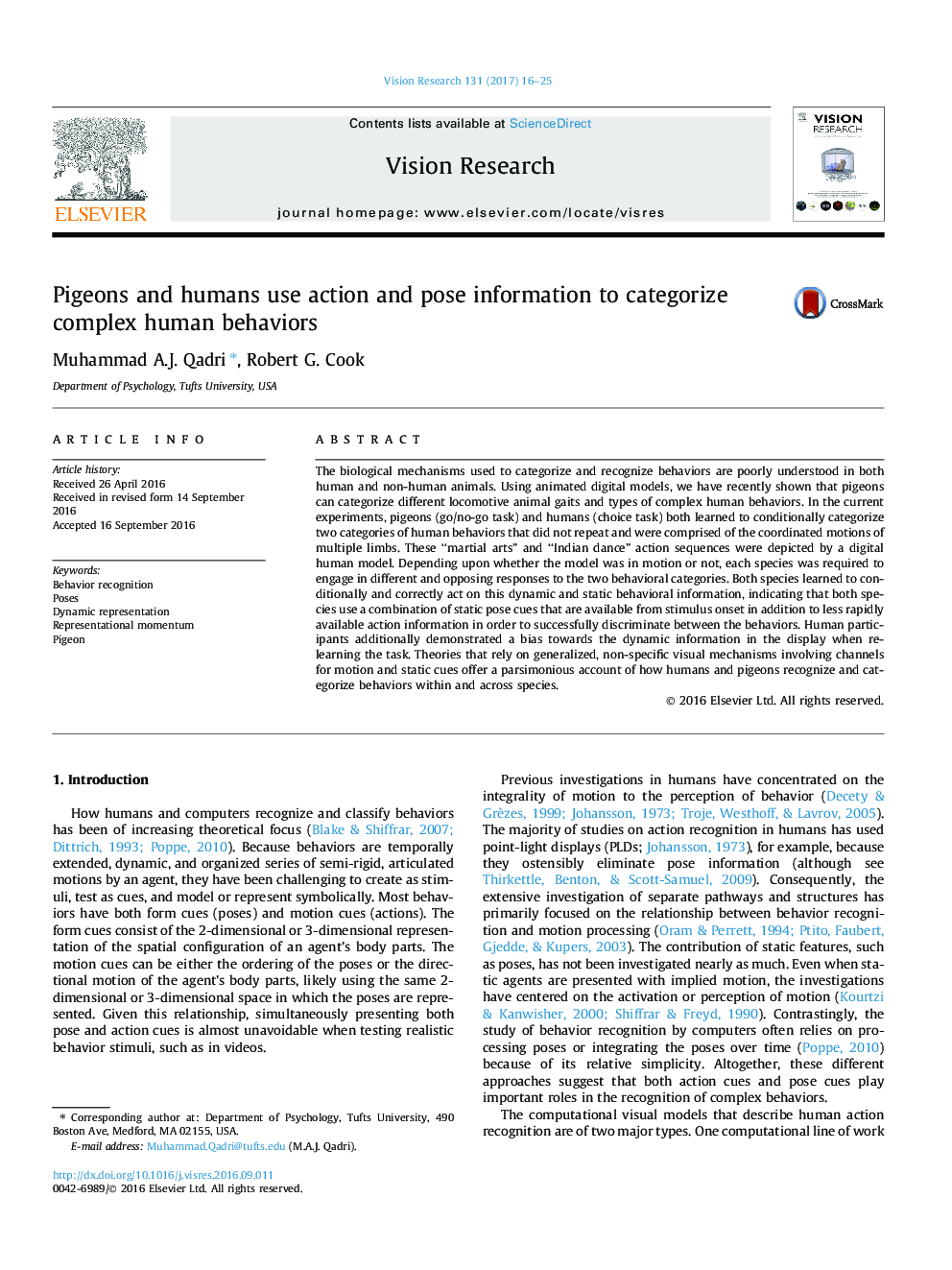| کد مقاله | کد نشریه | سال انتشار | مقاله انگلیسی | نسخه تمام متن |
|---|---|---|---|---|
| 5705940 | 1603168 | 2017 | 10 صفحه PDF | دانلود رایگان |
عنوان انگلیسی مقاله ISI
Pigeons and humans use action and pose information to categorize complex human behaviors
ترجمه فارسی عنوان
کبوتر و انسان از عمل استفاده می کند و اطلاعات را برای طبقه بندی رفتارهای پیچیده انسان انجام می دهد
دانلود مقاله + سفارش ترجمه
دانلود مقاله ISI انگلیسی
رایگان برای ایرانیان
کلمات کلیدی
شناخت رفتار، علامت گذاری می شود، نمایندگی پویا، شتاب نمایندگی کبوتر،
موضوعات مرتبط
علوم زیستی و بیوفناوری
علم عصب شناسی
سیستم های حسی
چکیده انگلیسی
The biological mechanisms used to categorize and recognize behaviors are poorly understood in both human and non-human animals. Using animated digital models, we have recently shown that pigeons can categorize different locomotive animal gaits and types of complex human behaviors. In the current experiments, pigeons (go/no-go task) and humans (choice task) both learned to conditionally categorize two categories of human behaviors that did not repeat and were comprised of the coordinated motions of multiple limbs. These “martial arts” and “Indian dance” action sequences were depicted by a digital human model. Depending upon whether the model was in motion or not, each species was required to engage in different and opposing responses to the two behavioral categories. Both species learned to conditionally and correctly act on this dynamic and static behavioral information, indicating that both species use a combination of static pose cues that are available from stimulus onset in addition to less rapidly available action information in order to successfully discriminate between the behaviors. Human participants additionally demonstrated a bias towards the dynamic information in the display when re-learning the task. Theories that rely on generalized, non-specific visual mechanisms involving channels for motion and static cues offer a parsimonious account of how humans and pigeons recognize and categorize behaviors within and across species.
ناشر
Database: Elsevier - ScienceDirect (ساینس دایرکت)
Journal: Vision Research - Volume 131, February 2017, Pages 16-25
Journal: Vision Research - Volume 131, February 2017, Pages 16-25
نویسندگان
Muhammad A.J. Qadri, Robert G. Cook,
